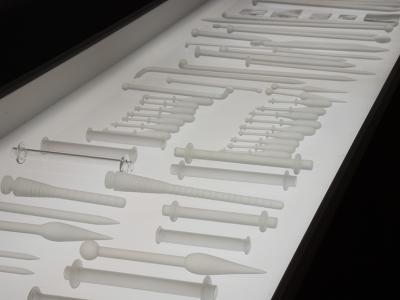New Textiles comprise a range of materials: spider silk, nanotechnology, biocouture, smart textiles (conductive threads, fiber optics), incorporation of Arduino microprocessors, etc. Collaborations between scientists and artists are producing new materials and projects that span both domains. New materials such as carbon fibers have been used not only as clothing but also in sports, medicine, astronautics, architecture, the military, in hospitals, etc. Military technologists have created a soldier’s cloak that camouflages the wearer in the environment. NASA’s robonauts’ (robotic astronauts) hands can perform tasks using the same tools used by human spacewalkers using a sensitized glove. Medical textiles enable, for example, the surgical use of machine-embroidered textile grafts as a form of scaffolding to promote nerve and muscle repair.
In the textile art field, artists are producing wearable art, gallery installations, and public art by collaborating scientists and engineers. Some work explores visual communication or conceptual approaches involving the intersections between art and technology. LED light ornaments, thermochromic ink, and conductive threads can be materials; images from social media, scanned portraits, microscopic viruses, and data from laboratory experiments can be motifs. Laser cutting, 3D printing, heat press machines, computer looms, and digital sewing machines can be tools. Maker spaces can be artists’ workshops and studios, where people get opportunities to use new tools and facilities as well as meet and collaborate with creative people.












